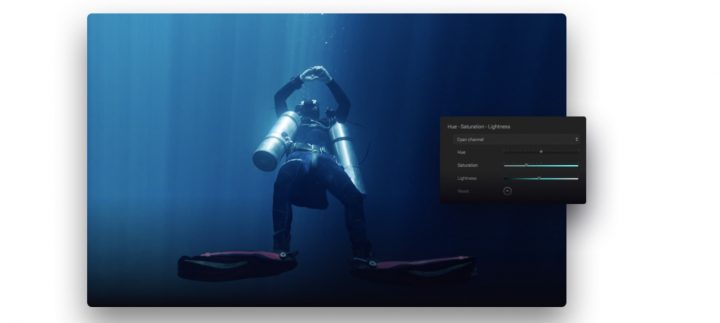

- #Dxo photolab elite gamma curve adjustment software#
- #Dxo photolab elite gamma curve adjustment iso#
- #Dxo photolab elite gamma curve adjustment plus#
- #Dxo photolab elite gamma curve adjustment download#

U Point technology automatically masks the image area contained within the adjustment circle based on a mathematical analysis of the image. There are three groups of adjustment available-Light, Color, and Detail-each with its own settings, allowing you to adjust 15 different parameters in any selected area. While it’s not new to version 2, the incorporation of Nik Software’s local adjustment U Point technology is another factor that sets PhotoLab apart from competitors. And the effect is adjustable with a slider from 0 to 100, with a default setting of 50, so you can apply whatever level suits you. In images that have areas of high contrast, there’s still some haloing, but this latest version doesn’t degrade sharpness as the previous one did. This is a particularly valuable tool for my outdoor photos in Southern California.
#Dxo photolab elite gamma curve adjustment plus#
ClearView Plus analyzes image and reduces the effect of atmospheric conditions such as fog and haze to add contrast and clarity. The ClearView tool has been upgraded to become DxO ClearView Plus. If a Control Point doesn't give you the results you want, you can brush a mask onto the area you want to adjust locally and apply the U Point adjustments in that way. Even the standard noise reduction found in the Essential version is outstanding.
#Dxo photolab elite gamma curve adjustment iso#
The Prime noise reduction found in the Elite version is capable of eliminating noise altogether at the highest ISO settings of every camera I’ve tested.
#Dxo photolab elite gamma curve adjustment software#
Noise reduction is also automatically applied to raw captures, and DxO’s noise reduction is the best in any software I’ve tested. The Smart Lighting tool allows it to be applied locally, which is useful in an image with faces. But at times it can lower the contrast when applied globally. In most cases it does a great job expanding the dynamic range of an image, especially if the image is underexposed. One of the automatic corrections is DxO Smart Lighting. To facilitate your decision, you can see before and after views of the image. These adjustments are generally excellent, but if you prefer not to adjust them or not apply them at all, you can use the tool panel to do so. It takes just seconds, and when complete, the adjustments are applied to the present image and any others that you open with the same camera and lens combination.
#Dxo photolab elite gamma curve adjustment download#
As PhotoLab identifies a camera/lens pairing in your image files that matches one in its database, the program asks if you want to download the corrections. DxO has tested thousands of camera body and lens combinations, creating a powerful database from the results. While the new DAM features are important, the heart of PhotoLab is its capacity to get the highest quality out of processing raw files. Well designed and implemented, this search feature is a valuable addition to PhotoLab. Results are displayed in the filmstrip below the main preview window, or you can open them in grid view in a new window (View>Unlock image browser or cmd/ctr+U). The search results are nearly instantaneous when indexing is complete. You can run the indexing function in the background as you work, or type in search parameters and the program will index your photo library as it searches. To speed the search process, PhotoLibrary indexes the image folders.

PhotoLab 2 shows before and after views of adjustments, in this case the DxO ClearView Plus adjustment. If you need one of the DAM options available only in Lightroom, you can still use PhotoLab’s superior raw file processing by accessing it as a Lightroom plug-in. I look forward to more options such as lens model, keywords, and geotags to be added in the future. The software will even find images captured at a specific focal length taken with a zoom lens. You can’t move images from your camera or media card into a folder on your storage media from within PhotoLab, though.Īs part of the new DAM capabilities, you can search for images based on EXIF data, file name, capture date, star rating, camera model, focal length, and more. Unlike Adobe Lightroom, PhotoLab uses your existing folder structure to view images and doesn’t require you to import to a catalog. Users of previous versions will note that the Organize module is now the PhotoLibrary to denote the new DAM module. The PhotoLab workspace is easy to use even if you’re unfamiliar with imaging software. I worked with the Elite version, which is well worth the extra cost. The Elite version offers three activations plus DxO Prime noise reduction, DxO ClearView Plus, anti-moiré tools, ICC profiles, DCP profile creation, export to multiple image sizes and formats, preset editing, and customized palettes. The Essential version allows two activations and a more basic toolset. PhotoLab 2 is available in two versions: Essential for $99 and Elite for $149.


 0 kommentar(er)
0 kommentar(er)
